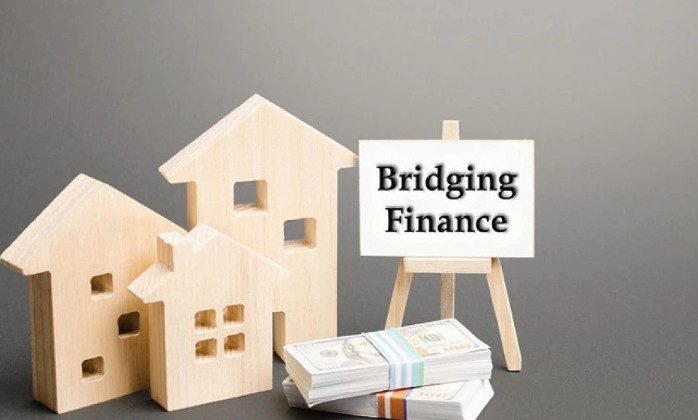You’re probably familiar with fixed interest loans, and variable home loans, or even split fixed and variable loans. But there’s another way to get your hands on money for the purchase of a property – it’s called Bridging Finance.
Put simply, Bridging Finance is a short-term loan designed to ‘bridge’ a financial gap between two transactions. Typically, it’s the sale of one property and the purchase of another. Bridging Finance is becoming increasingly popular with borrowers as it provides quick access to funds until longer-term financing (like a mortgage or sale proceeds) becomes available.
Bridging Finance can work very well in a seller’s market, such as the one we’re in now. Having said that, there are some risks involved with this type of finance. (more of this later).
So let’s look at some of the key features of how Bridging Finance works:
- It’s a secured loan against a property (either the one you’re selling, the one you’re buying, or both)
- The term is usually from a few weeks up to 12 – 18 months.
- Interest rates are higher than traditional mortgages, but it provides fast you with fast liquidity. (ie, the ease that an asset can be converted into cash).
- Repayment usually happens when your old home sells, or you secure a permanent mortgage or other financing.
HOW BRIDGING FINANCE CAN BENEFIT A HOME SELLER
Flexibility and leverage
Bridging Finance can give you flexibility and leverage. For example, say you’ve found a home for $700,000 that you absolutely love, but you haven’t sold you’re current one just yet. A bridging loan lets you pay the deposit and complete the purchase. Then once your existing home sells, you can use the sale proceeds to repay the bridging loan.
Avoid Chain Breaks
Often with the sale of a property, there’s a chain of dependent property transactions that need to occur. One delayed sale can cause others to collapse. Bridging finance allows you to complete your sale or purchase independently, which avoids chain-related issues, stress and disappointment.
Cover temporary cash flow gaps
If you’re waiting on the proceeds of a property sale, a bridging loan can help cover immediate costs. This includes moving expenses, legal transactions fees, or even paying off other loans.
THE ADVANTAGES OF BRIDGING FINANCE IN A SELLER’S MARKET
Our local property market has enjoyed a sustained period of property growth for two years or more. Homes are still selling fast. In fact, according to the latest data from REIWA, the median selling days for homes in November 2025 is just eight days.
Bridging Finance offers a number of advantages:
- You can act quickly and secure your next property: In a competitive market, desirable homes sell fast. Bridging finance gives you the liquidity to buy right away, without waiting for your current property to sell. This can make your offer more attractive to sellers
- Avoid “subject to sale” conditions: Offers that depend on selling your current home are weaker and often rejected. With bridging finance, you can make an unconditional offer, which gives you a competitive edge.
- You can wait for the best price when selling your old home: Without pressure to sell quickly, you can hold out for a stronger offer. This can offset some of the extra interest cost of the bridging loan.
- Smooth transition between homes: There’s no need for temporary accommodation or rushed moves. You can move into your new property first, then stage and sell the old one properly.
- Potential to capture appreciation In a rising market, property prices may continue to increase. Buying now (with bridging finance) could mean paying less than if you wait until after selling.
A FEW THINGS TO BE AWARE OF WITH BRIDGING FINANCE.
Before you take up a Bridging Finance arrangement, it’s important to know all the risks associated with this type of finance.
High Interest Rates and Fees: Bridging loans usually have much higher interest rates than standard mortgages or business loans. You’ll also face arrangement fees, valuation fees, and exit fees, which can add significantly to the total cost
Short Repayment Periods: Most bridging loans last 6–12 months. So if your exit strategy (e.g., selling a property or refinancing) is delayed, you may struggle to repay on time. This can lead to penalty interest or even repossession.
Risk of Losing Your Property: Bridging loans are secured, often against a property.
This means if you default, the lender can force a sale of the property to recover the debt.
Market Risk: If the property market weakens, you may sell for less than expected. This could leave you short of funds to repay the loan.
Here at C & R Settlements in Mandurah, we’re renown for our hard work, attention to detail, and going the extra mile for our clients. We’re Mandurah’s Number One independent settlement agent with over 80,000 settlements under our belt (and still going strong).
As an added bonus, when you choose C & R Settlements, you can use our free courtesy truck when it’s time to make the move. All you’ll need is a standard driver’s licence (and perhaps a few strong mates to lend a hand on moving day). Just be aware that our free courtesy truck is very popular, and bookings are essential. Just another reason to make the move to C & R Settlements in Mandurah. For details, call us on 9581 2148. Or email mandurah@crsetts.com.au

